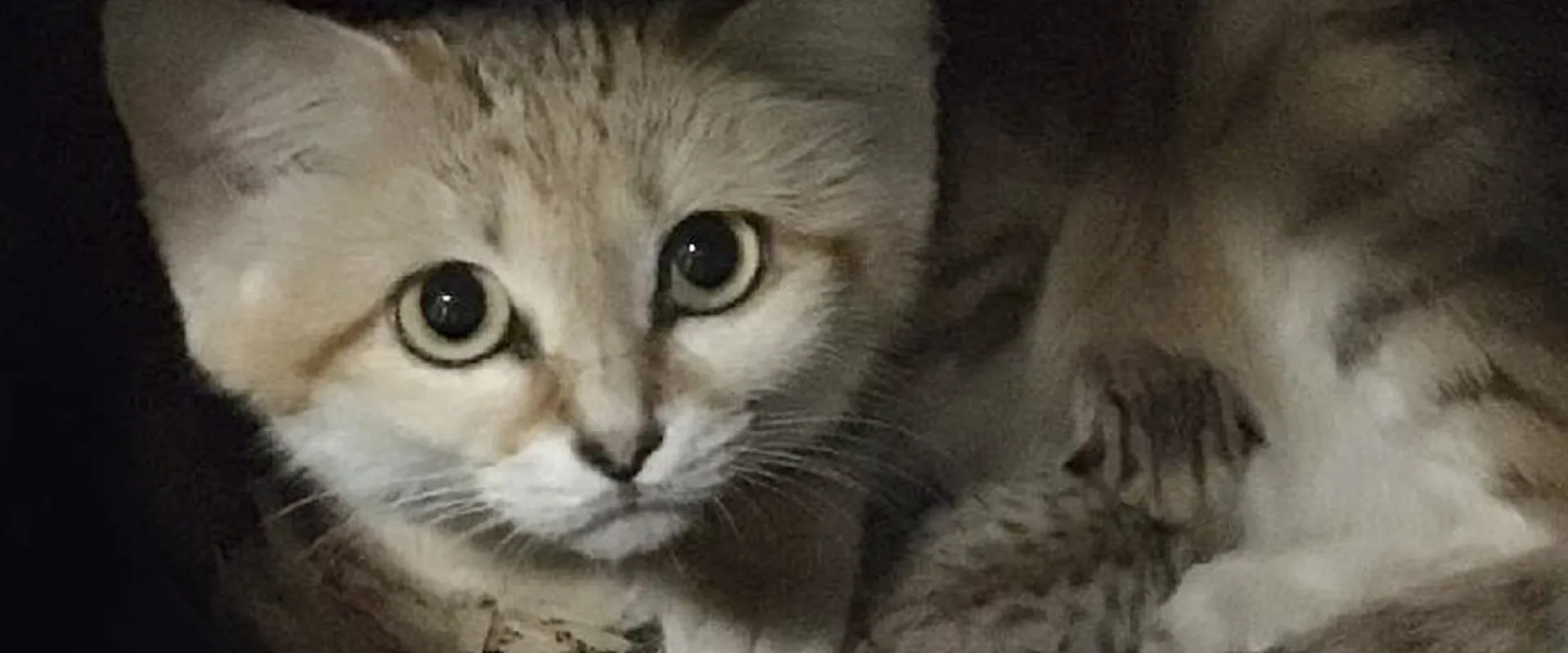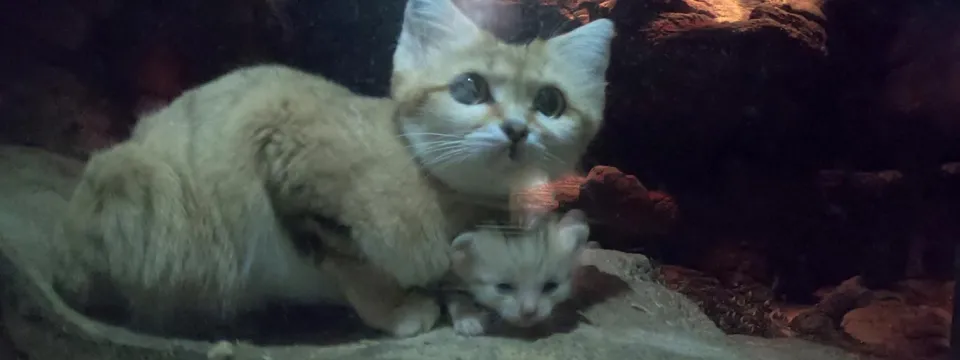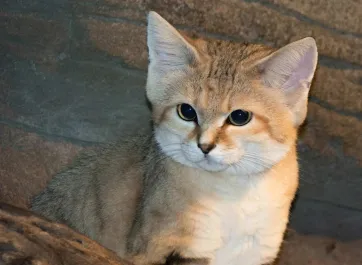Asheboro, N.C. – Sept 3, 2020 – Sand cats may be small but don’t let their petite size fool you. They’re wild, fearless hunters that kill venomous snakes in the desert. They’re also a rare sight to see, which is why the North Carolina Zoo is excited to announce the birth of a sand cat on Monday, Aug. 10. The kitten, small enough to fit into a teacup, was born to mother Najma, three, and father Cosmo, five. This is the first kitten for the pair.
The mother and kitten are in a quiet, non-public viewing area of the Zoo and have minimal contact with staff and keepers. They live in the Desert habitat, which is currently closed to the public because of Covid-19 restrictions.
Only 13 facilities affiliated with the Association of Zoos and Aquariums (AZA) have sand cats. Less than half, or six, have breeding pairs. Because of the limited number of zoos with sand cats, it’s a rare treat to see one born under human care. The total sand cat population in 2019 in AZA zoos was only 33.
The sand cat is one the world’s smallest feline species weighing from four to eight pounds and measuring, on average, 20 inches long. Its life expectancy under human care is 10-12 years.
Although sand cats are incredibly appealing with their big ears, big eyes and petite frame, ask any zookeeper who cares for them about their demeanor and you’ll hear: they are wild, ferocious animals that should never be kept as pets.
Sand cats are native to the deserts of North Africa and the Arabian Peninsula, and the only cat found predominately in deserts. Nocturnal in nature, they can easily adapt to the extreme climate of desert environments with very hot and very cold temperatures. A solitary species, males and females are generally found together for mating purposes only.
Humans rarely see sand cats in the wild because they live in harsh landscapes, are secretive in nature, and hunt at night. That makes it difficult to study them, including getting an accurate population number.
Sand cats are well-known to North African nomadic tribes who call them "snake hunters," they also feed on small rodents, spiders and insects.
The cats have an exceptionally keen sense of hearing, which they use to detect animals under the sand and use their excellent digging skills to quickly capture their prey
###
About the North Carolina Zoo
At the North Carolina Zoo, we celebrate nature. As the world’s largest natural habitat Zoo, we inspire a lifelong curiosity about animals for the hundreds of thousands of people who visit our Zoo each year. Our dedicated team of experts provides exceptional, compassionate care for the more than 1,800 animals and 52,000 plants that call our Park home. We also lead efforts locally and globally to protect wildlife and wild places because we believe nature’s diversity is critical for our collective future. The North Carolina Zoo invites all of our guests to witness the majesty of the wild in the heart of North Carolina and welcomes everyone to join in our mission to protect nature’s diversity. Visit NCZoo.org to begin your life-changing journey.
About the N.C. Department of Natural and Cultural Resources
The N.C. Department of Natural and Cultural Resources (NCDNCR) is the state agency with a vision to be the leader in using the state’s natural and cultural resources to build the social, cultural, educational and economic future of North Carolina. NCDNCR’s mission is to improve the quality of life in our state by creating opportunities to experience excellence in the arts, history, libraries and nature in North Carolina by stimulating learning, inspiring creativity, preserving the state’s history, conserving the state’s natural heritage, encouraging recreation and cultural tourism, and promoting economic development.
NCDNCR includes 27 historic sites, seven history museums, two art museums, two science museums, three aquariums and Jennette’s Pier, 39 state parks and recreation areas, the North Carolina Zoo, the nation's first state-supported Symphony Orchestra, the State Library, the State Archives, the N.C. Arts Council, State Preservation Office and the Office of State Archaeology, along with the Division of Land and Water Stewardship. For more information, please call 919- 807-7300 or visit www.ncdcr.gov.



